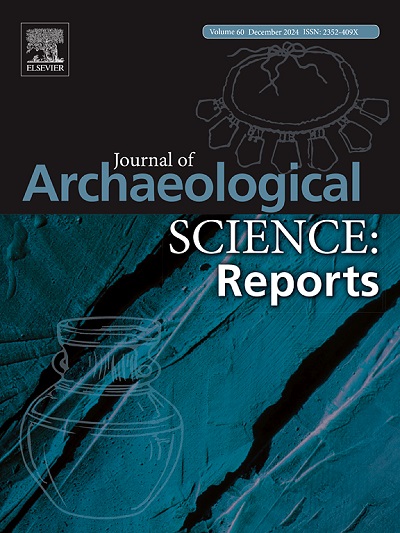追踪路径:首次尝试在晚期罗马城市 Torreparedones(西班牙巴埃纳)采用多同位素方法进行动物管理
IF 1.5
2区 历史学
0 ARCHAEOLOGY
引用次数: 0
摘要
公元 3 世纪期间,位于巴特卡省的托雷帕雷多内斯城经历了社会、城市和经济模式的变革。为了了解这一变革时期罗马希斯帕尼亚南部地区畜牧业活动的复杂性,我们进行了多同位素分析。分析包括 15 种动物的 13C、15N、18O 和 87Sr/86Sr 以及骨胶原和牙釉质样本。还采集了四种植物样本,以确定当地生物可利用的锶的特征。结果表明,该遗址中使用的四种主要类群的管理制度存在很大差异。发现同一物种的动物在进食时不仅在所食用的牧草种类上存在差异,而且在获得食物和水的季节性方面也存在差异。通过对 87Sr/86Sr 的分析,确定了当地的硒生物利用率,并确定了 15 种动物中 9 种可能的当地来源。预测模型的使用表明,一些动物的潜在原产地可能在数百公里之外,这说明贸易路线范围广泛,值得在今后的研究中进行探索。本文章由计算机程序翻译,如有差异,请以英文原文为准。
Tracing the path: First attempt of a multi-isotope approach to animal management in the Late Roman city of Torreparedones (Baena, Spain)
During the 3rd century CE, the city of Torreparedones, in the province of Baetica, experienced a change in its social, urban and economic paradigm. To understand the complexity of the husbandry activities in the southern region of Roman Hispania during this period of change, a multi-isotope analysis has been undertaken. This analysis has included 13C, 15N, 18O and 87Sr/86Sr in 15 animals combining bone collagen and tooth enamel samples. Four plant samples were also taken for the characterization of the local bioavailable Sr. The results suggest a great variety of management regimes in the four main taxa used in the site. Differences have been detected in the feeding of animals from the same species not only in the kind of graze consumed but also in seasonal access to food and water. The analysis of 87Sr/86Sr has allowed local Sr bioavailability to be established and also to determine the likely local origins of 9 of the 15 animals. The use of predictive models suggests potential origins of some animals up to hundreds of kilometres away, pointing to wide-ranging trade routes worthy of exploration in future research.
求助全文
通过发布文献求助,成功后即可免费获取论文全文。
去求助
来源期刊

Journal of Archaeological Science-Reports
ARCHAEOLOGY-
CiteScore
3.10
自引率
12.50%
发文量
405
期刊介绍:
Journal of Archaeological Science: Reports is aimed at archaeologists and scientists engaged with the application of scientific techniques and methodologies to all areas of archaeology. The journal focuses on the results of the application of scientific methods to archaeological problems and debates. It will provide a forum for reviews and scientific debate of issues in scientific archaeology and their impact in the wider subject. Journal of Archaeological Science: Reports will publish papers of excellent archaeological science, with regional or wider interest. This will include case studies, reviews and short papers where an established scientific technique sheds light on archaeological questions and debates.
 求助内容:
求助内容: 应助结果提醒方式:
应助结果提醒方式:


